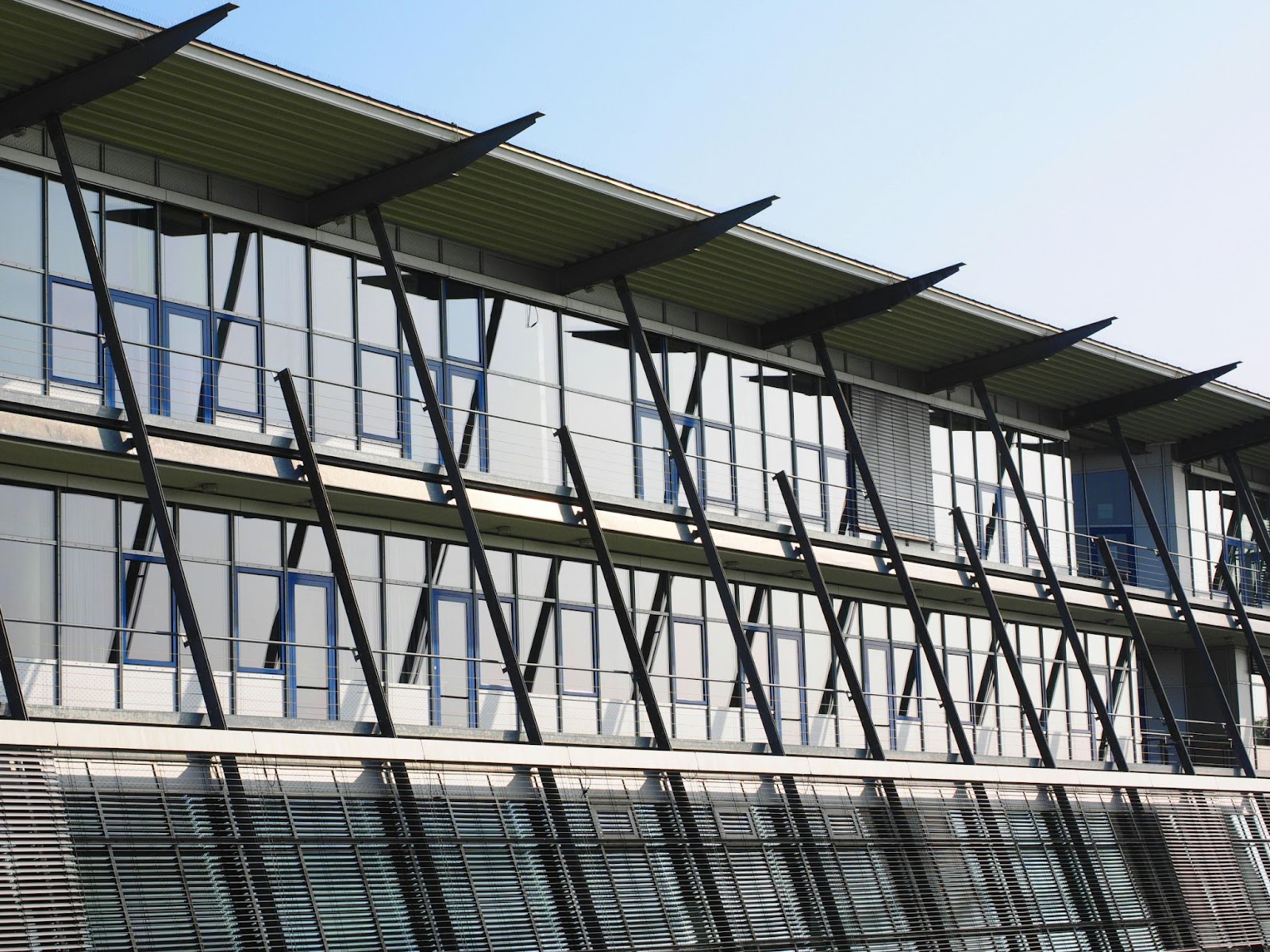Safeguarding Spaces: What Makes A Door Fire Rated?

Explore the critical elements behind ‘what makes a door fire rated,’ unraveling the secrets that elevate doors to guardians of safety in any space.
Imagine a door that stands as a stalwart guardian against the ravages of fire, offering not just physical protection but peace of mind in the face of potential disaster. Fire-rated doors are not just ordinary entrances; they are meticulously crafted fortifications, designed to withstand the intense heat and pressure of a blaze, saving precious time for evacuation and containment. In this exploration, we delve into the secrets behind what makes a door fire-rated, unraveling the layers of engineering mastery and regulatory adherence that ensure these guardians of safety stand tall amidst the flames. So, buckle up as we embark on a journey to uncover the hidden intricacies of fire-rated doors, where every detail is a testament to our commitment to safety and compliance.
Why Are Fire-Rated Doors Necessary?
Fire-rated doors are essential for containing the rapid spread of fire within a building, safeguarding lives, protecting property, and meeting vital safety regulations. Let’s delve deeper into the mechanisms and features that make fire-rated doors indispensable components of fire safety systems.
Prevention Of Fire Spread
Fire-rated doors serve as effective barriers by resisting the penetration of fire and smoke. Constructed with specialized materials and seals, they withstand high temperatures, preventing flames and smoke from spreading to adjacent areas. This containment crucially slows the fire’s progress, providing vital time for evacuation and minimizing property damage.
Protection Of Lives And Property
Fire-rated doors play a pivotal role in safeguarding lives by providing crucial time for occupants to evacuate safely during a fire. Additionally, these doors minimize property damage by containing the fire within designated areas, potentially reducing losses and preserving valuable assets. Their dual function as life protectors and property guardians underscores their indispensable role in fire safety measures.
Compliance With Safety Regulations
Fire-rated doors are mandated by various safety regulations and building codes, such as the International Building Code (IBC) and the National Fire Protection Association (NFPA) standards. Compliance with these regulations is essential to ensure a safe environment, meet legal requirements, and mitigate liability risks associated with non-compliance. Adherence to fire-rated door standards is a cornerstone of responsible building management and prioritizes the safety of occupants and property.
Enhanced Fire Resistance
Fire-rated doors surpass standard doors by incorporating specialized materials and construction techniques that provide increased resistance to fire and heat. They often feature core materials such as mineral cores or honeycomb structures, along with intumescent seals that expand under heat to block smoke and flames. Innovative technologies such as fire-resistant glazing and multi-layered construction further enhance their ability to withstand intense heat and pressure, making them indispensable elements in fire safety systems.
What Materials Are Used In Fire-Rated Doors?
Fire-rated doors incorporate diverse materials, including mineral cores for insulation, steel or wood facings for structural integrity, intumescent materials for sealing gaps, reinforcing materials like steel plates for strength, and surface finishes such as paint or laminate for aesthetics and protection.
Core Materials
Fire-rated door cores typically consist of mineral cores or composite materials specially formulated for high fire resistance. Mineral cores, made from materials like gypsum or vermiculite, offer excellent insulation properties and maintain structural integrity under extreme heat. Composite materials combine various elements to achieve desired fire resistance levels while ensuring durability and stability. The choice of core material significantly influences the door’s ability to withstand fire, making it a critical factor in determining its overall fire resistance rating.
Facing Materials
Facing materials in fire-rated doors, such as steel or wood, provide essential structural support and aesthetic appeal. Steel facings offer exceptional strength and durability, while wood facings add warmth and architectural charm. These materials not only enhance the door’s appearance but also serve as protective layers, shielding the core from damage and maintaining its fire-resistant properties. Choosing appropriate facing materials is crucial for ensuring both functionality and visual appeal in fire-rated door construction.
Intumescent Materials
Intumescent materials play a critical role in fire-rated doors by expanding when exposed to heat. This expansion forms a dense, insulating barrier that seals gaps between the door and frame, effectively blocking the passage of flames and smoke. As the temperature rises during a fire, the intumescent material swells, creating a tight seal that helps contain the fire and protect occupants and property.
Reinforcing Materials
Reinforcing materials, such as steel plates or mesh, are commonly integrated into fire-rated doors to bolster their structural integrity. These materials fortify key areas of the door, such as hinges, locksets, and edges, to withstand the intense heat and pressure of a fire. By reinforcing vulnerable points, fire-rated doors maintain their shape and functionality longer, facilitating safe evacuation and containment efforts during emergencies.
Surface Finishes
Surface finishes on fire-rated doors serve both aesthetic and protective purposes. Standard finishes like paint or laminate enhance the door’s appearance while providing a layer of protection against wear and tear. Some specialized finishes, such as fire-resistant coatings or intumescent paints, offer additional fire resistance, further bolstering the door’s ability to withstand flames and heat. These finishes not only ensure the door’s durability but also contribute to its overall fire safety performance, making them integral components of fire-rated door construction.
How Are Fire Ratings Determined For Doors?
Fire ratings for doors are determined through standardized testing procedures, such as those outlined in the NFPA 252 and UL 10C standards. These tests evaluate factors like fire resistance, smoke control, structural integrity, and the duration of fire resistance. Let’s delve deeper into the specifics of these testing procedures and their significance in determining the fire rating of doors.
Testing Standards
Testing standards for fire-rated doors are established by organizations such as UL (Underwriters Laboratories) and CEN (European Committee for Standardization). Adherence to these standardized procedures is crucial to ensuring accurate and reliable fire ratings, providing confidence in the door’s ability to withstand fire and smoke. Compliance with testing standards underscores the commitment to safety and regulatory requirements in building construction.
Fire Resistance
In fire resistance testing, doors are exposed to controlled flames in a furnace, simulating real fire conditions. The duration of exposure varies based on the desired fire resistance rating. Criteria for achieving a specific rating include the door’s ability to maintain its structural integrity, limit temperature rise on the exposed side, and prevent the passage of flames and hot gases. These tests assess the door’s performance under fire conditions and determine its ability to withstand fire for a specified period, typically ranging from 20 minutes to several hours.
Smoke Control
Fire-rated doors undergo testing to evaluate their effectiveness in controlling the spread of smoke during a fire. This testing typically involves assessing the door’s ability to maintain smoke tightness when exposed to elevated temperatures and pressure differentials. Smoke control is crucial for minimizing health hazards associated with smoke inhalation and improving overall fire safety by limiting visibility impairment and facilitating safe evacuation routes. Effective smoke control measures, including properly tested and rated fire-rated doors, contribute significantly to mitigating the risks posed by fires in buildings.
Structural Integrity
During fire testing, the structural integrity of fire-rated doors is evaluated to ensure they remain intact and functional during a fire. This includes assessing their ability to withstand deformation, sagging, or collapse under fire conditions. It’s crucial for fire-rated doors to maintain their position and functionality to fulfill their intended purpose of providing a barrier against fire and smoke, allowing for safe evacuation and containment. Structural integrity testing ensures that fire-rated doors can withstand the rigors of a fire and continue to perform their vital role in protecting lives and property.
Duration Of Fire Resistance
The duration of fire resistance is determined during testing by exposing fire-rated doors to controlled fire conditions for specific periods, ranging from 20 minutes to several hours. Different time ratings signify the door’s ability to withstand fire for the designated duration while maintaining its structural integrity and preventing the passage of flames and smoke. Longer durations indicate higher levels of fire resistance, offering increased protection and time for evacuation and containment efforts. The duration of fire resistance directly influences the door’s performance in various fire scenarios, providing critical time for occupants to escape and emergency responders to intervene effectively.
What Is The Average Lifespan Of A Fire-Rated Door?
The average lifespan of a fire-rated door varies depending on factors such as material quality, proper installation, usage, maintenance practices, environmental conditions, and potential changes in building codes. With routine maintenance, adherence to usage guidelines, and suitable environmental conditions, fire-rated doors can typically last for several decades, ensuring continued fire safety protection within buildings.
Material Quality
High-quality materials are paramount for the longevity of fire-rated doors. Durable materials such as steel, fiberglass, or solid wood contribute to the door’s structural integrity and resistance to wear and tear over time. Quality intumescent seals and core materials also play a crucial role in maintaining fire resistance. Investing in superior materials ensures the prolonged durability and effectiveness of fire-rated doors in safeguarding lives and property.
Proper Installation
Correct installation procedures are vital for the longevity and effectiveness of fire-rated doors. Make sure that trained professionals who are familiar with fire-rated door systems perform the installation. Follow manufacturer guidelines meticulously, including proper framing, sealing, and hardware installation. Regularly inspect and maintain installed doors to address any issues promptly, preserving their integrity and functionality for optimal fire safety performance.
Usage And Maintenance
Usage frequency and regular maintenance significantly impact the lifespan of fire-rated doors. High-traffic areas may subject doors to more wear and tear, necessitating more frequent inspections and maintenance. Routine tasks such as lubricating hinges, checking seals, and repairing any damage promptly are essential to ensuring doors remain operational and effective in the event of a fire. Regular maintenance helps extend the lifespan of fire-rated doors, ensuring they continue to provide reliable fire protection over time.
Environmental Conditions
Environmental conditions, such as extreme temperatures and humidity fluctuations, can impact the lifespan of fire-rated doors. Exposure to high temperatures may degrade materials or cause expansion and contraction, compromising the door’s integrity. Similarly, high humidity levels can lead to corrosion or warping, affecting functionality. To mitigate these challenges, ensure proper insulation and sealing to minimize temperature fluctuations and moisture ingress. Additionally, consider using materials resistant to environmental stressors and implement regular inspections to address any issues promptly, preserving the longevity of fire-rated doors.
Building Code Changes
Changes in building codes and regulations can impact the lifespan of existing fire-rated doors by introducing new requirements or updating existing ones. Older doors may not meet the latest standards, necessitating retrofitting or replacement to ensure compliance and continued effectiveness in fire safety. Staying current with safety standards is crucial to identify any necessary updates or modifications needed to maintain the longevity and reliability of fire-rated doors, ensuring they remain in compliance with evolving regulations and capable of providing optimal protection against fire hazards.
Exploring Liberty Shielding’s Expertise In Fire-Resistant Doors!
Liberty Shielding stands as a beacon of expertise in the realm of fire-resistant doors. With a commitment to quality materials, precise installation, and ongoing maintenance, their doors offer unparalleled durability and protection against fire hazards. As environmental conditions evolve and building codes change, Liberty Shielding remains at the forefront, ensuring their doors meet and exceed the latest safety standards. For peace of mind and reliable fire safety solutions, choose Liberty Shielding’s fire-resistant doors—your trusted guardians in times of crisis.
FAQs
Yes, but it’s essential to use fire-rated paint and follow manufacturer guidelines. Applying non-compliant paint can affect the door’s fire resistance.
Not necessarily. Building codes specify where fire-rated doors are required, often in areas where fire separation is crucial, such as stairwells or corridors.
Minor damage may be repairable, but significant damage may compromise the door’s integrity. Consult with a professional to assess the extent of the damage.
While fire-rated doors offer some insulation, their primary function is fire resistance. For thermal insulation, additional measures may be needed.
Yes, but any added features must meet fire safety standards. Windows in fire-rated doors often include fire-resistant glass and framing to maintain the door’s integrity.
Explore More News

Fire Rated Glass for Aircraft Interiors: Challenges and Solutions
Embark on a journey to elevate aviation safety to new heights with Liberty Shielding’s pioneering innovation – fire rated glass…

Fire Resistant Glass: Key Features and Applications in Manufacturing
Step into the realm where security harmonizes with innovation. Unveil the extraordinary attributes of our fire-resistant glass, meticulously crafted to…

Bullet-Proof Windows: Balancing Safety and Aesthetics
Step into the future of unparalleled security with Bullet-Proof Windows from Liberty Shielding. As the industry leader, we redefine safety…
